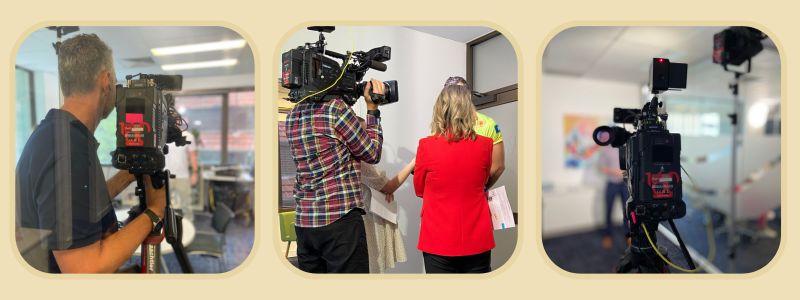How to answer difficult questions in a media interview
Media interviews can be daunting, particularly when faced with difficult or unexpected questions.
However, there are several techniques that can be used to navigate these situations and maintain a positive image for yourself or your organisation.
Undergoing Media Training with a media training agency is the best way to learn these techniques and one of the most important skills you’ll learn is the ability to successfully bridge from one topic to another. It’s a technique used to steer an interview or conversation in a particular direction, or to move the conversation away from a difficult or unwanted question effectively.

Difficult Questions
Difficult questions can come in many different forms, ranging from probing inquiries about a controversial topic to questions that seem designed to trap or embarrass you. Journalists use many tricks to try and force you to say something you don’t want to say. Media Training will teach you how to identify these tricks and how to respond effectively to stay on message and in control. This is particularly important during a crisis. Crisis Communication Media Training will teach you how to minimise harm to your reputation and that of your business or organisation when you have the media on your doorstep.
Bridging Techniques
Bridging is a technique used to steer an interview or conversation in a particular direction, or to move the conversation away from a difficult or unwanted topic.
Here are some bridging techniques used effectively in media training:
Acknowledge the question:
One of the keys to successful bridging is to first acknowledge the question being asked. This shows that you are engaged with the journalist and that you understand the topic being discussed. You can use phrases like “That is a great question” or “I understand why you’re asking that” to signal that you’re not trying to avoid the topic altogether.
Buy Time
If you are asked a difficult question that you don’t know how to answer immediately, it is perfectly acceptable to buy yourself some time to collect your thoughts. You can do this by repeating the question or asking the interviewer to rephrase it. This gives you time to gather your thoughts and come up with a suitable answer.
Use Bridging Techniques:
Bridging techniques can be used to steer the conversation back to your key messages when faced with difficult questions. They are useful for smoothly moving from one topic to another. For example, if you are asked a difficult question about a particular incident, you could say something like, “While I can’t comment on that particular incident, what I can say is that our organisation is committed to transparency and accountability.” These phrases can help you steer the conversation in the direction you want it to go without seeming evasive.
Stay Focused on your key messages:
Key messages are the most important points you want to communicate during an interview. They should be clear, concise, and memorable. When you’re bridging, try to connect your key messages to the issue being asked. This ensures you stay on topic and avoid being drawn into tangents that may be difficult to navigate.
For example, if you’re asked a difficult question about a recent controversy, you could say something like “While I can’t comment on that specific situation, what I can say is that our company is committed to integrity and transparency.” By consistently returning to your key messages, you can steer the conversation in the direction that you want it to go.
Be Honest and Transparent:
It’s essential to be honest and transparent during an interview, particularly when answering difficult questions. If you don’t know the answer, admit it. If you can’t comment on a particular topic, say so. Being open and honest will help build credibility with your audience.
Stay Calm:
Staying calm is crucial during an interview, particularly when faced with difficult questions. Getting defensive or angry will only damage your credibility and image. Take a deep breath, pause, and answer the question in a calm, professional manner.
Practice, Practice, Practice:
Bridging can be a challenging skill to master, but like anything else, it gets easier with practice. Take the time to prepare for an interview by practicing your key messaging and bridging techniques. Record yourself and review the footage to see where you can improve. Or work with a media trainer or colleague to develop suitable responses to difficult questions. By practicing your responses, you will feel more confident and better able to handle difficult questions during the interview.
Media Training
All of these skills can be learnt through Media Training, which has become an essential part of modern public relations and communications. With so many channels of communication available today, it’s crucial for companies and individuals to be able to navigate the media landscape effectively and with confidence.
By using techniques such as buying time, staying focused on the message, being honest and transparent, acknowledging the question, using bridging techniques, staying calm, and practicing, you can handle difficult questions.
The team at Adoni Media are Australia’s most experienced media trainers. Our former senior journalists and PR professionals have been newsroom bosses, foreign correspondents, war correspondents, political correspondents, and senior journalists and producers asking the tough questions for news programs, inside the halls of Parliament House and for shows such as Today Tonight and A Current Affair.
To improve presentation skills and learn the techniques to manage a media interview the team at Adoni Media delivers practical and personal training. To find out more about our Media Training facilitator coaches and programs contact us.


